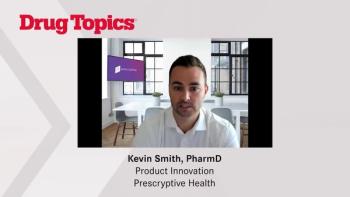
New certification process to push EHR and e-Rxs
In a development that could significantly impact pharmacists, the first 20 certifications for ambulatory electronic health records (EHRs) were announced July 18, in Washington, D.C., with much praise from the secretary of Health & Human Services, whose department contracted for the certification process.
In a development that could significantly impact pharmacists, the first 20 certifications for ambulatory electronic health records (EHRs) were announced July 18, in Washington, D.C., with much praise from the secretary of Health & Human Services, whose department contracted for the certification process.
At the press conference, HHS secretary Michael Leavitt called the moment "profoundly important." He also asserted that ways will be found to help physicians overcome the cost barriers to adopting EHR and indicated that, at some point, certification would become a condition of doing business with the federal government.
Several people close to the information technology and physician communities said the certification will have a widespread effect. Robert Tennant, M.A., senior policy adviser of the Medical Group Management Association, said his association is already advising physicians to be careful of software that is not at least applying for certification. He was a member of a workgroup for the Certification Commission for Healthcare Information Technology (CCHIT).
Despite the encouragement that certification and other developments may give e-prescribing, it is difficult to predict how much growth there will be over the next two years, said Bob Beckley, senior VP of pharmacy relations and product strategy for SureScripts, who is on the CCHIT interoperability workgroup.
Among its requirements, the certification mandates that software packages have 16 specific functionalities in managing medication lists, including storing drug information in discrete data fields for dose, route, and so on, and for maintaining dates, including start, renewal, and other points.
Under "ordering medication," 32 different mandates include the ability to set required fields to enforce generation of a complete Rx, associate a diagnosis with a prescription, and link to general prescribing information at the point of prescribing.
The software must be able to identify drug interaction warnings at the point of ordering and to support medication or immunization administration, including checks on patient identification and checks on the drug, dose, and other elements.
The certification was implemented by CCHIT. HHS contracted with the commission to carry out a consensus process for deciding on certification criteria and to create a process to test the products.
CCHIT developed the criteria over 18 months with five workgroups and representatives of physicians, hospitals, IT vendors, payers and purchasers, consumers, and others. It also included public comment periods, presentations at various professional meetings, and a pilot test. The commission published the first ambulatory criteria this past May and then began the tests on applicant software, through long sessions with "jurors," most of whom were physicians.
Despite the criteria for communicating with pharmacies and other entities, CCHIT noted that the current interoperability standards are "limited." They are to be expanded as work progresses under another HHS contract, which sets EHR communication standards.
The capabilities for certification will be updated regularly. The software vendors are allowed to have a sticker on their packages indicating the year they were certified. The vendors may apply to be recertified annually, if they wish. They must reapply at least every three years to maintain certification.
Newsletter
Pharmacy practice is always changing. Stay ahead of the curve with the Drug Topics newsletter and get the latest drug information, industry trends, and patient care tips.





























































































































